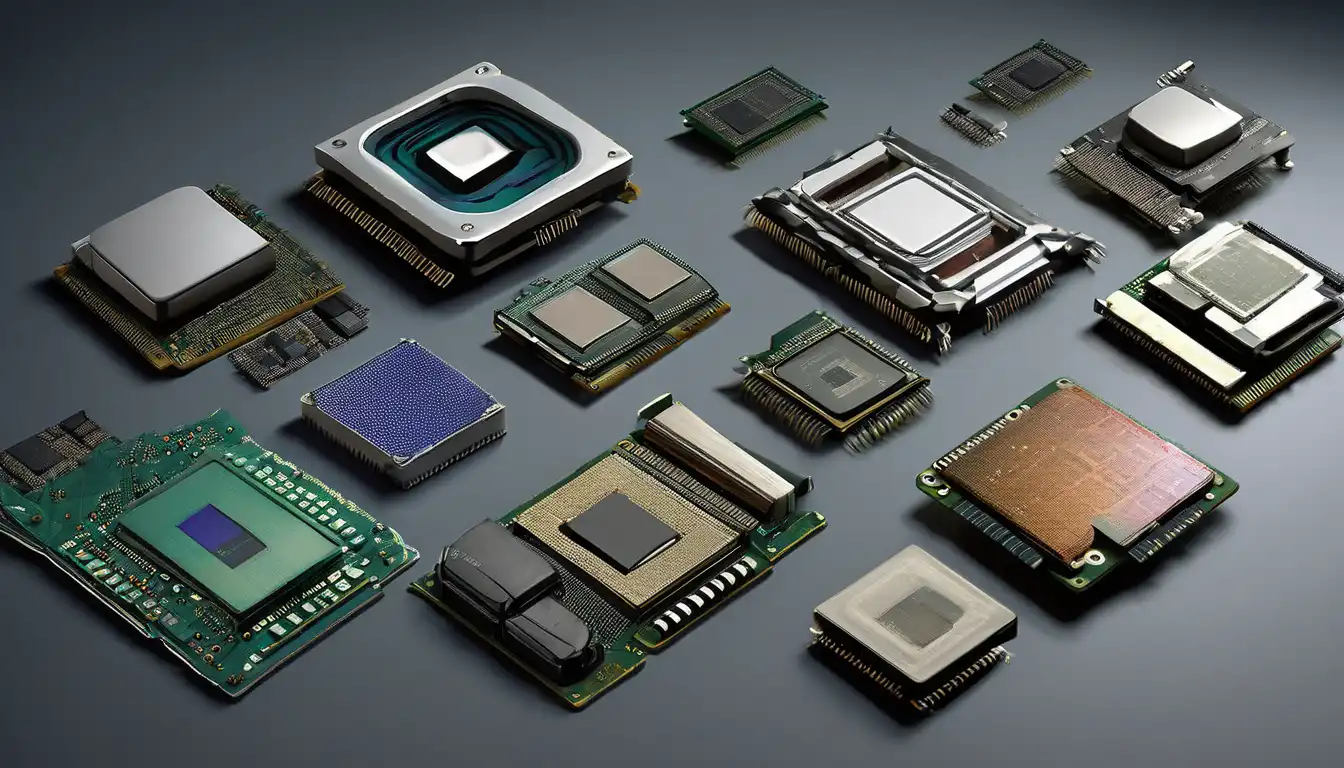The Dawn of Computing: Early Processor Beginnings
The evolution of computer processors represents one of the most remarkable technological journeys in human history. Beginning with primitive vacuum tube systems in the 1940s, processors have undergone exponential growth in power, efficiency, and capability. The first electronic computers, such as ENIAC, utilized thousands of vacuum tubes that consumed enormous amounts of power and required constant maintenance. These early processors operated at speeds measured in kilohertz and occupied entire rooms, yet they laid the foundation for the digital revolution that would transform society.
The Transistor Revolution: 1950s-1960s
The invention of the transistor in 1947 marked a pivotal moment in processor evolution. By the 1950s, transistors began replacing vacuum tubes, offering significant advantages in size, reliability, and power consumption. IBM's 700 series computers demonstrated the potential of transistor-based processors, paving the way for more accessible computing. The development of integrated circuits in the late 1950s further accelerated progress, allowing multiple transistors to be fabricated on a single silicon chip. This period saw the emergence of mainframe computers that could handle complex calculations for scientific research and business applications.
Key Milestones in Early Processor Development
- 1947: Invention of the transistor at Bell Labs
- 1958: First integrated circuit developed by Jack Kilby
- 1964: IBM System/360 introduces computer architecture concepts
- 1965: Gordon Moore proposes Moore's Law predicting transistor density doubling
The Microprocessor Era: 1970s-1980s
The 1970s witnessed the birth of the microprocessor, a complete central processing unit on a single chip. Intel's 4004, released in 1971, contained 2,300 transistors and operated at 740 kHz. This breakthrough made personal computing possible and democratized access to processing power. The subsequent decades saw rapid innovation with processors like the Intel 8080, Zilog Z80, and Motorola 68000. The 1980s introduced the x86 architecture with Intel's 8086 and 8088 processors, which would become the foundation for IBM PC compatibles and dominate personal computing for decades.
Notable Processor Families of This Era
- Intel 4004 (1971): First commercially available microprocessor
- MOS Technology 6502 (1975): Powered early home computers like Apple II
- Intel 8086 (1978): Established x86 architecture standard
- Motorola 68000 (1979): Used in early Macintosh computers and workstations
The Performance Race: 1990s-2000s
The 1990s marked an intense competition for processor supremacy, with clock speeds increasing from tens of megahertz to multiple gigahertz. Intel's Pentium processors became household names, while competitors like AMD challenged Intel's dominance. This era saw the introduction of RISC architectures, superscalar execution, and multimedia extensions like MMX and SSE. The late 1990s brought the transition to 64-bit computing with processors like AMD's Athlon 64, offering enhanced memory addressing capabilities. Multi-core processors emerged in the mid-2000s as clock speed increases reached physical limitations, shifting focus to parallel processing.
Modern Processor Architecture: 2010s-Present
Contemporary processors represent the culmination of decades of innovation, featuring complex multi-core designs, advanced power management, and specialized processing units. The rise of mobile computing drove development of low-power ARM architectures, which now power most smartphones and tablets. Modern processors incorporate artificial intelligence accelerators, advanced graphics capabilities, and security features like hardware-based encryption. The current landscape includes heterogeneous computing with CPUs, GPUs, and specialized accelerators working together to handle diverse workloads efficiently.
Current Processor Technology Trends
- Multi-core architectures with 16+ cores becoming common
- Integration of AI and machine learning accelerators
- Advanced manufacturing processes (5nm and below)
- Heterogeneous computing with specialized processing units
The Future of Processor Technology
Looking ahead, processor evolution continues to accelerate with several emerging technologies promising revolutionary changes. Quantum computing represents a paradigm shift from classical binary processing, potentially solving problems intractable for conventional processors. Neuromorphic computing aims to mimic the human brain's neural networks, offering efficient pattern recognition and learning capabilities. Photonic computing using light instead of electrons could dramatically increase speed while reducing power consumption. As we approach physical limits of silicon-based transistors, new materials like graphene and carbon nanotubes may enable continued progress.
Impact on Society and Technology
The evolution of processors has fundamentally transformed nearly every aspect of modern life. From enabling global communication networks to powering scientific research and artificial intelligence, processors have become the backbone of digital civilization. The continuous improvement in processing power has driven innovation across industries, from healthcare and transportation to entertainment and education. Understanding processor evolution helps appreciate the technological foundation supporting our interconnected world and provides context for future developments in computing technology.
Socioeconomic Impacts of Processor Advancement
- Enabled globalization through instant communication
- Democratized access to information and computing power
- Accelerated scientific discovery and medical research
- Created entirely new industries and job categories
The journey from room-sized vacuum tube computers to pocket-sized supercomputers demonstrates humanity's remarkable capacity for innovation. As processor technology continues to evolve, it will undoubtedly unlock new possibilities and challenges, shaping the future of technology and society in ways we can only begin to imagine. The evolution of computer processors stands as a testament to human ingenuity and our relentless pursuit of progress.
